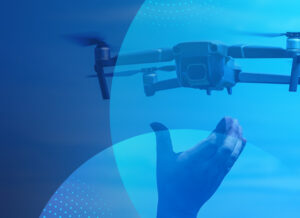The landscape of intelligence gathering has evolved dramatically since the 1990s and early 2000s. Back then, accessing and utilizing information effectively was a major challenge, especially for Government agencies tasked with monitoring threats. Intelligence gathering was often a manual process, with significant gaps in communication and real-time analysis. Today technology has bridged those gaps, and organizations are more equipped than ever to gather and act upon threat intelligence.
At the heart of this evolution is open source intelligence (OSINT). OSINT refers to the collection and analysis of information that is publicly available from a variety of sources, such as websites, social media platforms, blogs, news outlets and more. This data is processed to derive actionable insights for decision making, security operations and threat detection. By leveraging OSINT, organizations can gather, analyze and deliver real-time data to enhance security and operational effectiveness.
Leveraging OSINT
When it comes to cyber operations, effectively leveraging OSINT can provide a significant advantage. Without strong intelligence, it becomes difficult to move from strategic planning to tactical and operational execution. Threats often begin long before a hacker breaches a network, with adversaries gathering intelligence on their targets over time. A holistic approach is critical—whether focusing on offensive or defensive cyber strategies—because gaps in understanding can lead to vulnerabilities and unintended consequences.

A useful framework for understanding OSINT’s role is the information-to-risk pyramid. At its base, monitoring and telemetry are essential for providing context to potential threats. Many organizations rely on the Common Vulnerability Scoring System (CVSS), a standardized framework for evaluating and ranking the severity of software vulnerabilities, to help prioritize and address the most critical risks first. However, this system alone may not provide a complete picture. Integrating additional intelligence can reveal that vulnerabilities are actively exploited, making them far more dangerous.
Once threats are identified, organizations can bring in key stakeholders to formulate strategic responses. Risk owners, often from the business side, play a critical role alongside IT in decision-making. Government agencies, with their vast networks and resources, face these challenges on an even larger scale. In today’s environment seconds matter, and OSINT plays a pivotal role in crafting strategic plans to mitigate risks in real time.
The Human Factor
While technology plays a crucial role in OSINT, the human factor remains just as important. Analysts are at the heart of making OSINT actionable, reviewing alerts and correlating information. Integrating intelligence through application programming interface (API) calls can enhance this process, allowing organizations to combine telemetry data with open source information (OSIF).
Networks in large organizations are complex, generating thousands of security information and event management (SIEM) alerts daily, leading to alert fatigue. In such environments, timely responses are crucial. Adversaries can breach networks quickly, often within hours, so the ability to act decisively is vital to preventing significant losses. By focusing on critical alerts rather than false alarms, analysts can address the real threats.
Aligning OSINT tools with governance, risk management and compliance (GRC) can help organizations reduce vulnerabilities and enhance their overall security resilience. By understanding risks, organizations can effectively apply technology to secure their assets and ensure uninterrupted operations.
The Cost of Inaction
Turning gathered intelligence into actionable insights is vital, particularly for safeguarding critical infrastructure. As highlighted by FBI Director Christopher Wray, advanced persistent threats (APTs) are increasingly targeting essential sectors like energy, water and transportation. Today’s cybercriminals are no longer just interested in attacking networks to boast about their successes; they are targeting specific organizations.
Beyond direct attacks, adversaries may also infiltrate networks to understand how organizations and systems operate. Networking devices—especially in small office and home (SoHo) environments—are often the weakest links, frequently overlooked despite their vulnerability. While organizations regularly patch servers and monitor critical systems, these networking devices, particularly near sensitive areas like military bases or airports, can be soft targets. Once compromised, attackers can use local IP addresses to stay within the network, gathering information to plan more sophisticated attacks.
Furthermore, the threats extend beyond financial loss. Data privacy and the long-term impact of breaches must also be considered. Publicly traded companies face regulatory scrutiny from agencies like the Securities and Exchange Commission (SEC) and Federal Trade Commission (FTC). With new regulations such as Cyber Incident Reporting for Critical Infrastructure Act (CIRCIA) on the horizon in 2025, organizations will be required to report incidents promptly. Failing to protect sensitive data can result in costly fines and reputational damage, long after the breach has been resolved.
The Future of Cybersecurity is Proactive
Cybersecurity is a continuous operation that requires vigilance and adaptability. In an era where adversaries are patient and highly organized, an organization’s ability to identify and respond to threats effectively enables them to be not only reactive but proactive, addressing risks before they become crises. OSINT is no longer optional; it is a strategic necessity for organizations aiming to protect their assets, reputation and future.
To learn more about harnessing OSINT to enhance situational awareness, intelligence gathering and strategic decision making watch Recorded Future’s webinar “The Importance of OSINT in Defense Operations.”







